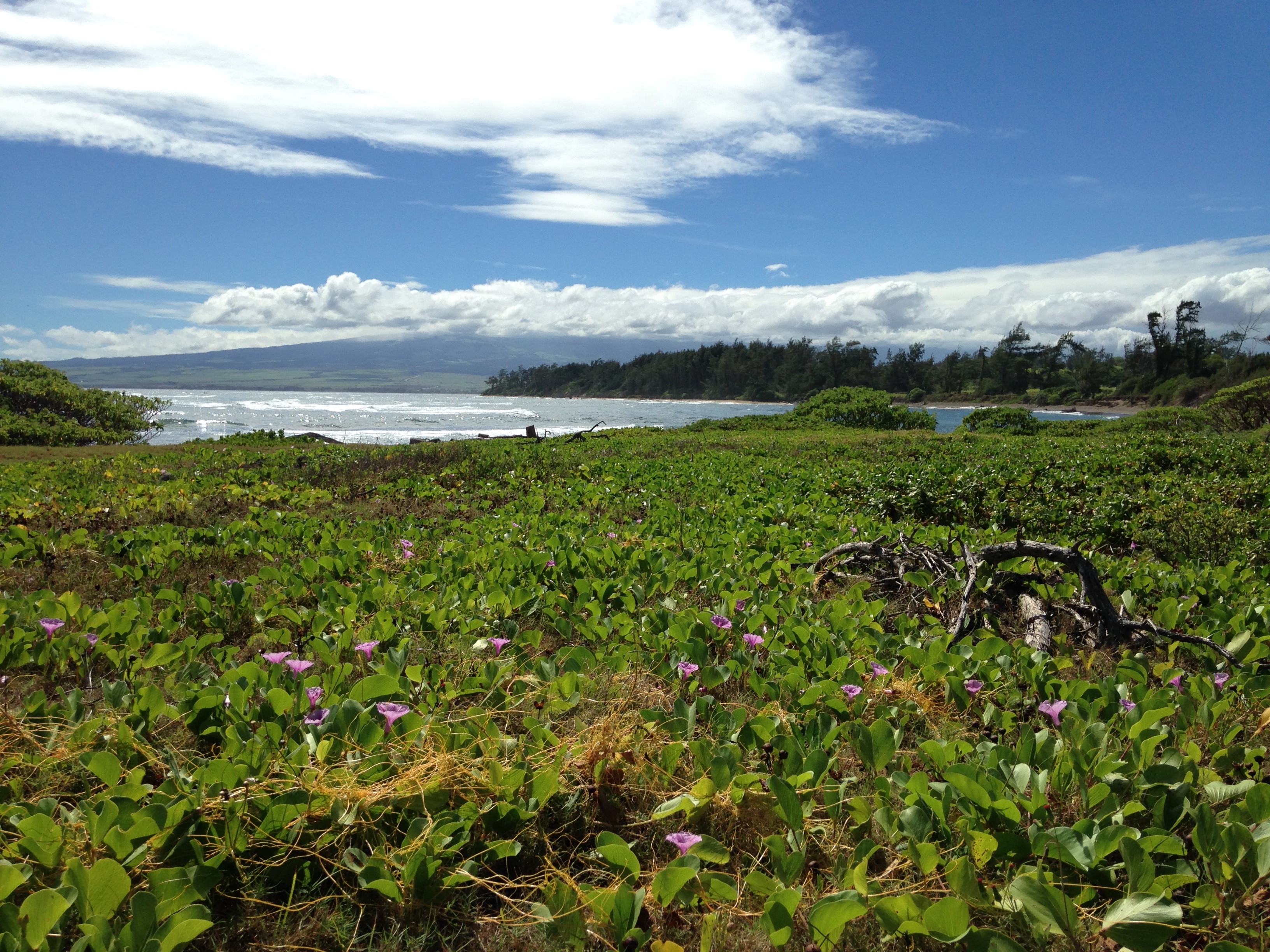Strand Vegetation

Strand vegetation includes “sandbuilder” plants naturally found along the shorelines, on or above the beach. It helps to stabilize the shoreline and break waves during king tides, wave events, and storm surges. It also serves as a windbreak to protect agroforests from salt spray and the drying effects of wind. The complete ecosystem includes trees, shrubs, and vines, grasses and other small plants that hold the soil and block wind and waves.
Where plants grow: different species belong in different zones
Strand vegetation refers to plants growing in the sand at the top of the beach. As you walk inland from the beach in a natural area, you will pass through several zones of vegetation, affected by salinity (salt), wind, and soil. If you plant, plant each species in its natural zone.

- Kōñe, Kiej, Kiejor (Pemphis acidula) is often called a mangrove associate because it is especially tolerant of salt. It is often found where it is rocky instead of sandy, or mixed in with the strand vegetation.
- Herbaceous plants (vines) cover and hold the sand above the hightide mark, especially on windward coasts.
- Marļap (Canavalia species)
- Markinenjojo (yellow beach pea - Vigna marina)
- Topo , Marpeļe (beach morning glory - Ipomoea pes-caprate, I. macrantha)
- Salt-tolerant shrubs (small woody plants) and low-growing trees and branches are on the beach berm (beach crest). These break the wind and filter salt spray. This vegetation community is sometimes called littoral (seashore) shrubland.
- Trees that can tolerate salt spray grow up to 15-20 feet high on the beach berm and backbeach. Their roots hold the coastline. This is often called halophytic (salt-tolerant) forest.
- Bōb (Pandanus tectorius) is a characteristic tree in this forest.
- Larger trees are found further inland.
When to plant
If you plant coastal trees or shrubs:- Plan ahead. Soon after a king tide is a good time, to allow a few months for seedlings to take root before the next king tide. Check the tide charts.
- Sea levels over the coming months, based on large-scale processes (not including tides, local tropical storms or tsunamis) are shown here.
- Don't plan a planting project during an El Nino year 0 because there is a high risk of storms that can wash away your plantings.
- Postpone your outplanting day if inundations are predicted by local radio.
- Short-term (weekly) forecasts of high sea level based on tides and wave trains from far-away storms are available for Majuro and Kwajelein.
What to plant
Cuttings of kōņņat (Scaevola) are the easiest and most effective thing to plant.
Protecting and encouraging strand forest
Recommendations from Brian Vandervelde
- Don’t cut or remove kōņņat (Scaevola).
- Don’t cut or remove edwaan [wild, inedible Pandanus variety], but it’s okay to replace it with loarm̗we [an edible cultivar]. loarm̗we is especially good for shorelines because it needs salt to control a scale that infests it if it grows further inland. Another variety that is good for shorelines is l̗eikm̗aan.
- Allow utilomar (Guettardia) to grow inland of kōņņat..
- Allow coconuts to “mat” (don’t thin them, even dense sprouts from fallen nuts).
- After heavy erosion, kiden (Heliotropium) and kōņņat will start to grow in from seeds – protect them.
- Foster kōñe (Pemphis).
- Do not allow kañal (Pisonia grandis) or kōjbar (Neisosperma oppositifolium) to invade the outer (seaward) portion. Keep them inland.
- Manage vines – they can be good [cover surface] or bad [if hindering establishment of desired plants].
- Kaōnōn (laurel dodder) can strengthen the strand vegetation, but if excessive, it causes dieback of desired plants. Conserve the topo (beach morning glory) and markinenjojo (yellow beach pea).
- Remove marjej (Wedelia biflora - beach sunflower) because it can grow up and choke desired plants.
- Remove marlap (Canavalia) because it can outcompete (shade out) desired plants.
Case studies
- 2015 Outplanting on Woja Causeway, Ailinglaplap Atoll – planting strand species on an artificial causeway linking two islands.
- Strengthening Coastal Resilience in the outlying atolls of the Marshall Islands by SPC.
- The Waihe’e Coastal Dunes strand vegetation on Maui was restored by removing invasive species and encouraging the regrowth of kiden, kōņņat and another Hawaiian Scaevola species. After a small tsunami, these species survived and grew back much better than the invasive species.


